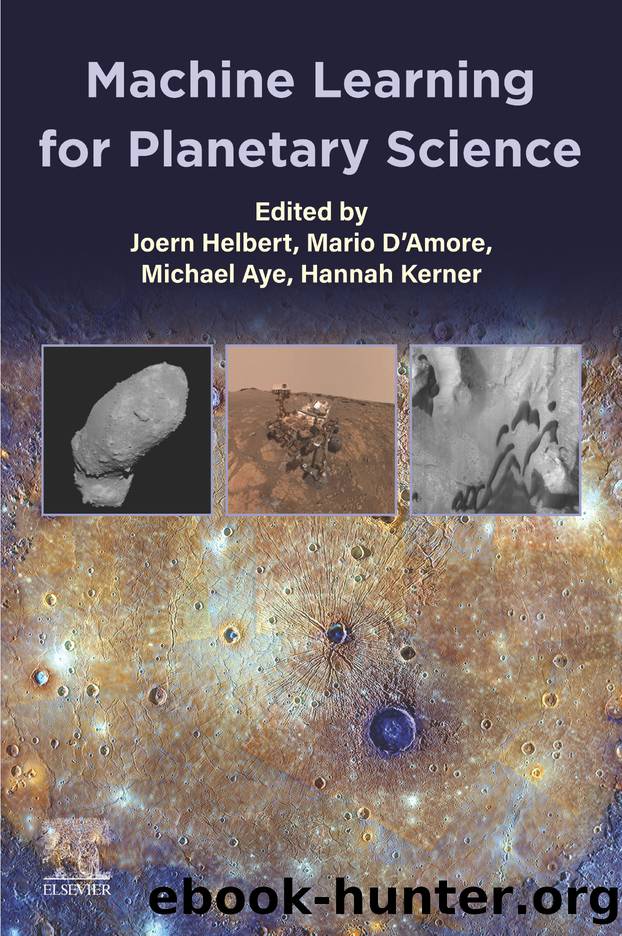Machine Learning for Planetary Science by Helbert Joern;D'Amore Mario;A

Author:Helbert, Joern;D'Amore, Mario;A
Language: eng
Format: epub
Publisher: Elsevier
Published: 2022-03-22T00:00:00+00:00
Figure 5.10 HiRISENet filtered performance: only examples with posterior probability (confidence) greater than or equal to a given threshold (x-axis) are included. The user can specify this threshold. Circles indicate performance with a confidence threshold of 0.9.
5.5.3 Model calibration and performance
Modern convolutional neural networks are often poorly calibrated, which means that their self-reported posterior probabilities do not reliably reflect empirical probabilities [16]. To improve the reliability of posterior probabilities, we explored various model calibration methods and found that the most effective method for this data set is temperature scaling [16], which estimates a scaling parameter (âtemperatureâ) to adjust the neural network's logits prior to their conversion to probabilities. Reliability diagrams for the HiRISENet model before and after temperature scaling method are shown in Fig. 5.11. The expected calibration error (ECE) (average weighted error across the probability bins) and maximum calibration error (MCE) (maximum error across the probability bins) were improved (reduced) after temperature scaling method was applied.
Download
This site does not store any files on its server. We only index and link to content provided by other sites. Please contact the content providers to delete copyright contents if any and email us, we'll remove relevant links or contents immediately.
Man-made Catastrophes and Risk Information Concealment by Dmitry Chernov & Didier Sornette(5926)
The Revenge of Geography: What the Map Tells Us About Coming Conflicts and the Battle Against Fate by Kaplan Robert D(4036)
Zero Waste Home by Bea Johnson(3782)
COSMOS by Carl Sagan(3559)
Good by S. Walden(3489)
In a Sunburned Country by Bill Bryson(3486)
The Fate of Rome: Climate, Disease, and the End of an Empire (The Princeton History of the Ancient World) by Kyle Harper(3007)
A Wilder Time by William E. Glassley(2818)
Camino Island by John Grisham(2763)
The Ogre by Doug Scott(2635)
Organic Mushroom Farming and Mycoremediation by Tradd Cotter(2631)
Human Dynamics Research in Smart and Connected Communities by Shih-Lung Shaw & Daniel Sui(2466)
Energy Myths and Realities by Vaclav Smil(2441)
The Traveler's Gift by Andy Andrews(2413)
9781803241661-PYTHON FOR ARCGIS PRO by Unknown(2326)
Inside the Middle East by Avi Melamed(2306)
Birds of New Guinea by Pratt Thane K.; Beehler Bruce M.; Anderton John C(2226)
A History of Warfare by John Keegan(2186)
And the Band Played On by Randy Shilts(2132)
